Lenovo ThinkBook 15 Gen 2 Review
- Paul Thurrott
- Jul 20, 2021
-
14

The ThinkBook 15 targets small businesses that need better security, reliability, and support than is possible with consumer-grade laptops. But there are too many compromises, especially with its display and keyboard, which undermine these strengths.
Design
The ThinkBook 15 Gen 2 is a traditional laptop, so it’s large, thick, and heavy, and it bears little resemblance to the more expensive ultra-light and ultra-thin PCs that I typically review. In fact, it reminds me of the huge Dell Latitude D800-series laptop on which I installed the first Longhorn beta, way back in 2003.
Windows Intelligence In Your Inbox
Sign up for our new free newsletter to get three time-saving tips each Friday — and get free copies of Paul Thurrott's Windows 11 and Windows 10 Field Guides (normally $9.99) as a special welcome gift!
"*" indicates required fields

But it does cut a handsome figure with its two-tone Mineral Gray laptop lid, and I feel like Lenovo has done a nice job of differentiating the ThinkBook lineup from its more premium ThinkPad- and Yoga-branded siblings, both visually and from a price-point perspective. It’s made of aluminum, mostly, with ABS plastic molding used for the bottom cover. It looks great and it feels premium. I’m also a fan of the Lenovo branding, as seen on the outside of the display lid and the right side of the keyboard deck.

Display
The ThinkBook 15 Gen 2 can be had with any 15-inch display panel as long as it’s Full HD (1920 x 1080) with a too-wide 16:9 aspect ratio. And that is a problem: For the first time in memory, I found myself noticing jaggy text and graphics, and it’s very clear that customers would be better served with a higher-resolution display, preferably one with a 16:10 panel.

Curiously, there are four display choices within those confines: A 220-nit LCD with no multitouch, a 250-nit IPS panel with no multitouch, a 300-nit IPS panel with 100 percent sRGB gamut coverage and no multitouch, and a 300-nit multitouch IPS panel. The review unit doesn’t support multitouch, but it’s not clear which of the panels I’m using. I find it bright enough for indoor work, where this PC belongs, but it would get washed out if you tried to use it outdoors.

The display lid is impossible to open with one hand, let alone one finger, thanks to the weight of the machine, but it does at least have thin bezels, especially on the left and right sides. Lenovo claims it has an 88 percent screen-to-body ratio, which is pretty good. But again, a 16:10 panel would fit in that space without any issues.
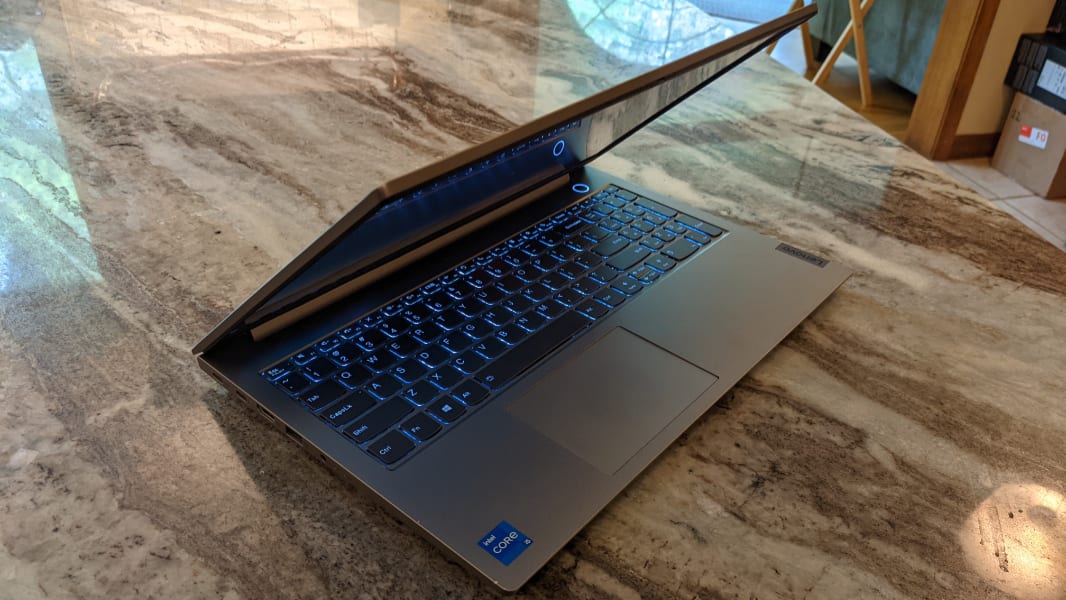
Internal components
Lenovo offers Intel and AMD versions of the ThinkBook 15 Gen 2, but I am reviewing an Intel-based version of the product, so I’ll focus on that. There are two processor choices, the 11th-generation Intel Core i5-1135G7 found in the review unit or the slightly more capable Core i7-1165G7. Both are quad-core parts, and both offer integrated Intel Iris Xe graphics.
There’s even more flexibility with the RAM: The ThinkBook comes with 8 GB of DDR4 RAM soldered to the motherboard, but you can configure it with another 8, 16, or 32 GB of RAM for a total of 40 GB, which is unusual and quite welcome. The review unit has just 8 GB of RAM.
And storage is more flexible still: Where the review unit ships with just a single 512 GB M.2 NVMe-based SSD drive, the ThinkBook can be configured with up to two drives, the second of which can be SSD or a 2.5-inch hard drive (HDD). If you go with two SSDs, you can have up to 1 TB of storage, but an SSD/HDD combo can be configured to a total of 2 TB.
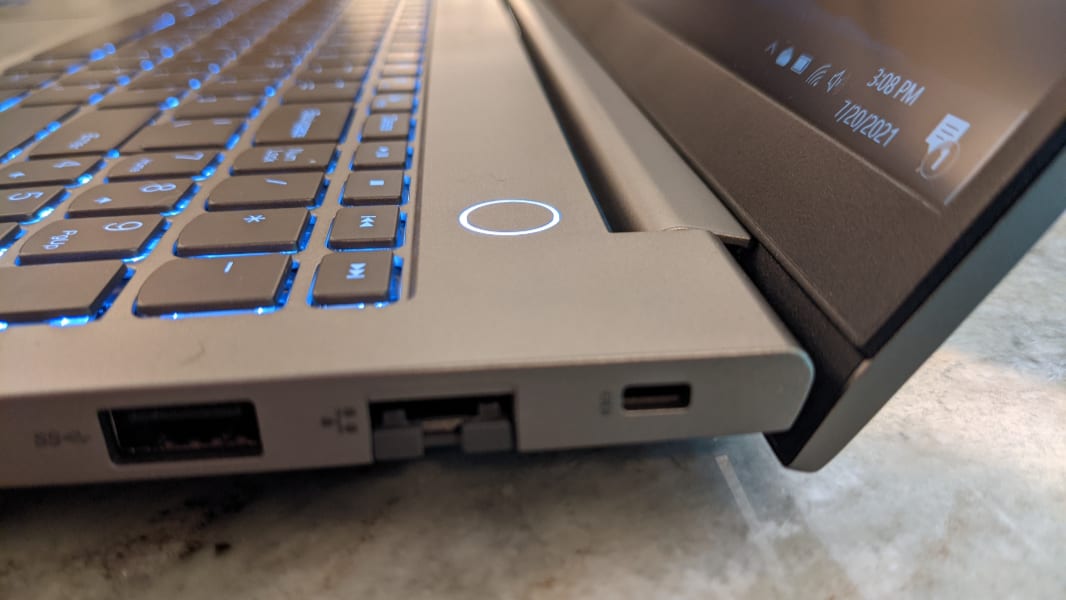
Performance has been, well, adequate, especially for the traditional productivity apps—Microsoft Office, a modern web browser—that most in the target market will use. But I recommend upgrading the RAM to at least 16 GB and possibly the processor if you have higher-end needs.
As an Intel-based PC, there was a bit of fan noise during application installs and system updates. I’m sensitive to noise, but I never found the ThinkBook troublesome. But there’s little in the way of noticeable heat, and Lenovo offers an Intelligent Cooling feature, accessible via the Fn + Q keyboard shortcut, that lets you toggle between “extreme performance,” “intelligent cooling,” and “battery saving” performance modes, each with its own cooling and fan speed/noise settings. So if you find the fan to be too loud, you can make this adjustment.
Connectivity
With its 11th-generation Intel components, the ThinkBook predictably offers modern connectivity with Intel Wi-Fi 6 and Bluetooth 5.1. Surprisingly, 4G/LTE and 5G cellular data is not available, even optionally.
Ports and expansion
Given its hefty form factor, you won’t be surprised to learn that expandability is excellent, with a nice mix of modern and legacy ports.
On the left, you will find two USB-C ports—one USB-C 3.2 Gen 2 and the other Thunderbolt 4/USB-C—one full-sized HDMI 1.4 port, and one full-sized USB-A 3.2 Gen 1 port with always-on device charging capabilities, plus a combo audio jack and a Novo hole, which is used to access firmware options with a paperclip.

On the right, there is a 4-in-1 card reader, a full-sized USB-A 3.2 Gen 1 port, and an Ethernet port, which is rare these days, and a Kensington lock slot.

Audio and video
I was pleasantly surprised by ThinkBook’s ability to pump out loud, clean sound through its bottom-firing Dolby Audio-powered stereo speakers, and I lingered over a scene from Atomic Blond, played via Microsoft Movies & TV, longer than usual as a result.
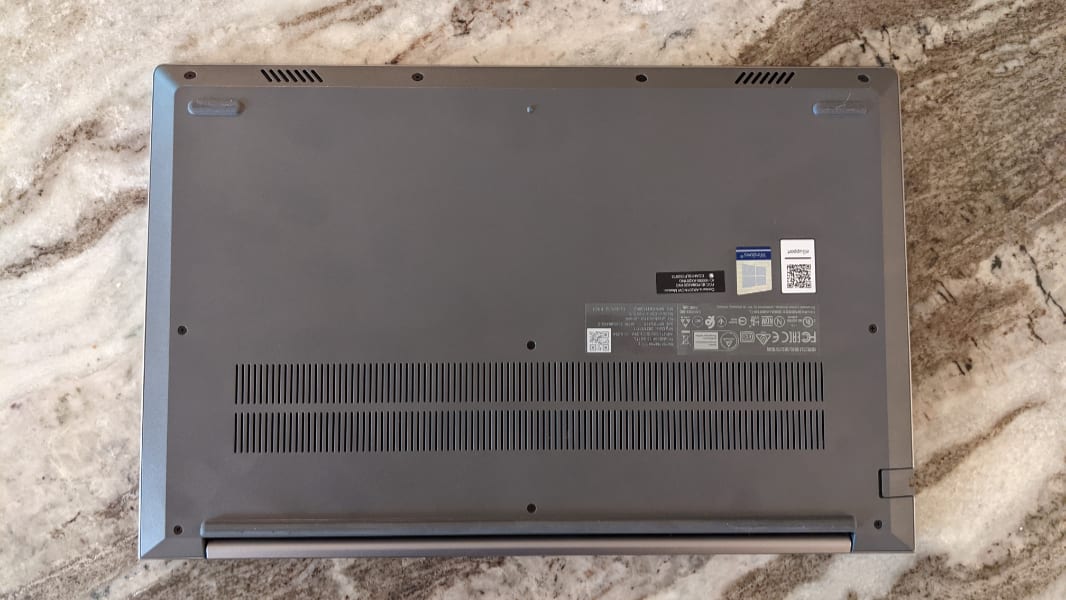
That said, I don’t like that the speakers can’t be automatically optimized for different content types. Instead, you need to run the Dolby Audio app and manually choose between Movie, Music, Game, and Voice presents, or use a graphic equalizer to find your own sound profile. I will say that the combination of this PC’s very large display panel and the excellent sound output made for an excellent movie-viewing experience.
On the productivity front, the ThinkBook 15 offers dual-array microphones and a standard and middling 720p webcam for conference calls. The latter also offers a manual ThinkShutter slider for privacy.
Keyboard, touchpad, and fingerprint reader
Lenovo’s keyboards are widely lauded by fans for being the best in the business, but I don’t feel that that’s been the case for years: Companies like HP, Dell, and even Microsoft offer superior typing experiences, thanks to their tighter and shorter key throws. But whatever you think of Lenovo’s keyboards, the ThinkBook 15 will prove challenging for many, like myself, who like to keep their hands on the keyboard and their eyes on the screen.
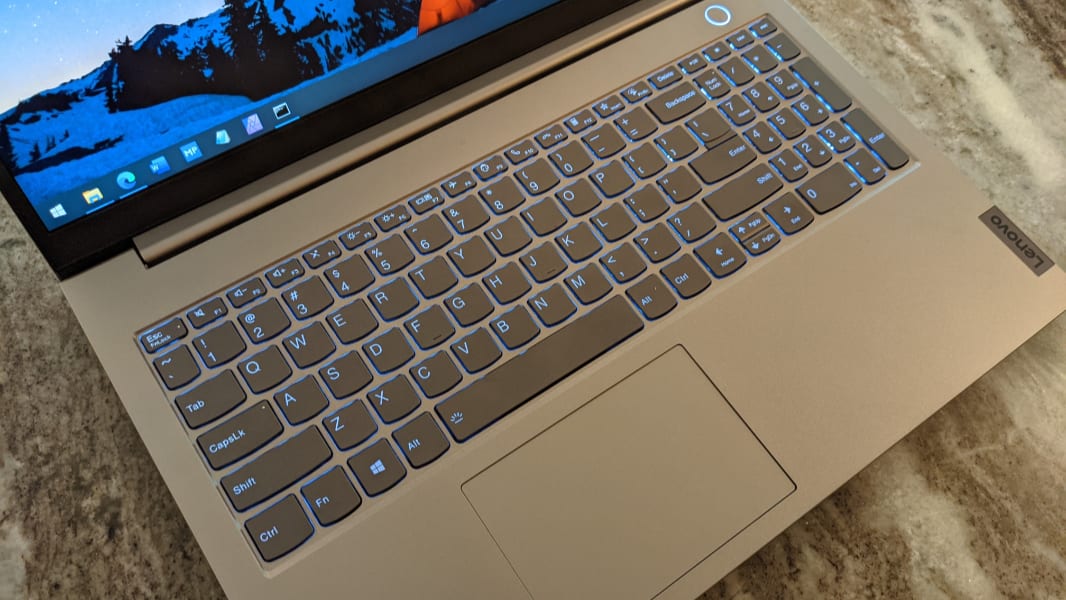
The problem? Lenovo added a numeric keypad to the right of the keyboard. And while I understand that some—Excel mavens, for example—prefer this layout, I very much do not, and I don’t think it meets the needs of most customers. For starters, it pushes the keyboard over to the left, creating an unnatural typing position that routinely caused me to mistype, look down at the keyboard, and correct my positioning.

Worse, however—and granted, part of this is me being a sloppy typist—I kept mis-hitting the keys that are normally on the edge of the keyboard, like Delete, Backspace, and Right Arrow, and hitting weird keys like Num Lock by mistake. And even if you do like numeric keypads, this version is skinny and hard to use, with very small keys. It’s not a good layout.

Yes, one would probably adapt somewhat if this were your only PC. And at least Lenovo put the Ctrl and Fn keys in the right place. It doesn’t always do so.
Considering the size of this PC, I’m surprised that the precision touchpad, which is made of mylar and not glass, isn’t bigger. Instead, it’s a smallish and buttonless surface. But I found that it worked well, and while I experienced my usual fumble-finger issues with three- and four-finger gestures, once I turned those off it worked quite well.

The ThinkBook also includes a Windows Hello-compatible fingerprint reader in the power button, which sits above the top right of the keyboard and has an attractive and lit-up circular shape. You can press this button once to power on the PC and sign in to Windows. I found it to be quite accurate.
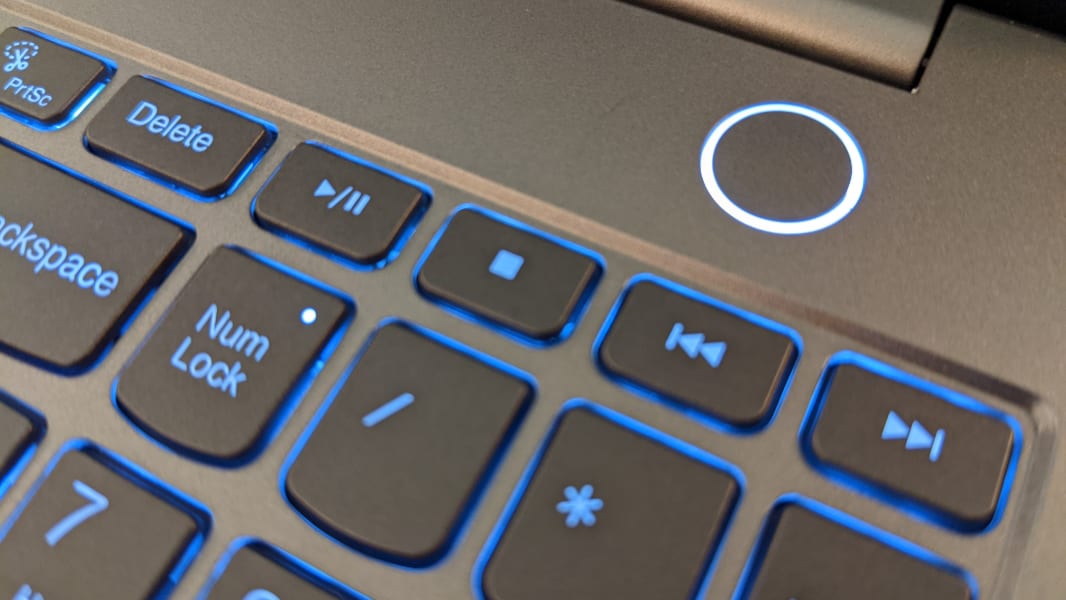
Portability
With its large and thick body and 3.75-pound curb weight, the ThinkBook 15 Gen 2 is in no way portable. And that’s fine: This PC isn’t designed for regular travel, but will instead be used around the home or perhaps carted to a local coffee shop from time to time.
Regardless, my observed battery life of about 4 hours was not great, necessitating keeping the 65-watt USB charger handy. As it turns out, that’s in part because the review unit has a smaller 45 watt-hour battery, which offers rapid charge to 80 percent in one hour; you can configure the ThinkBook 15 with a larger (and heavier) 60 watt-hour batter, with even faster rapid charging, and that’s something I’d consider for the additional battery life.
Software
The ThinkBook 15 comes with Windows 10 Pro (64-bit) only; Windows 10 Home is not an option. The bundled software is minimal: Lenovo supplies its Lenovo Vantage utility for software updates and other configurations, Lenovo Welcome, and Lenovo Hotkeys for discovering some of the PC’s unique keyboard shortcuts and other keyboard-based features. Oh, and McAfee, which I quickly removed, and a few other third-party utilities, like Smart Microphone Settings, which doesn’t appear to do much.
The ThinkBook also offers some unique and useful software solutions. It has integrated unified communications keys built into the top function row of the keyboard, with dedicated keys for accessing Lenovo support, hanging up a current call, and declining an incoming call. You can enable a useful feature called Flip to Boot that will automatically power on the system when you open the display lid. And as noted above, if you use the fingerprint reader integrated into the power button, you can power-on and sign in with a single press, a nice time-saver.
Pricing and configurations
The prices of Lenovo’s PC are infamously flexible thanks to never-ending sales that often dramatically undercut its retail price tags. As such, the ThinkBook 15 can be quite affordable: As low as $785 or so for an Intel-based model like the one I reviewed or an even lower $655-ish for one based on an AMD Ryzen 5 4500U processor.
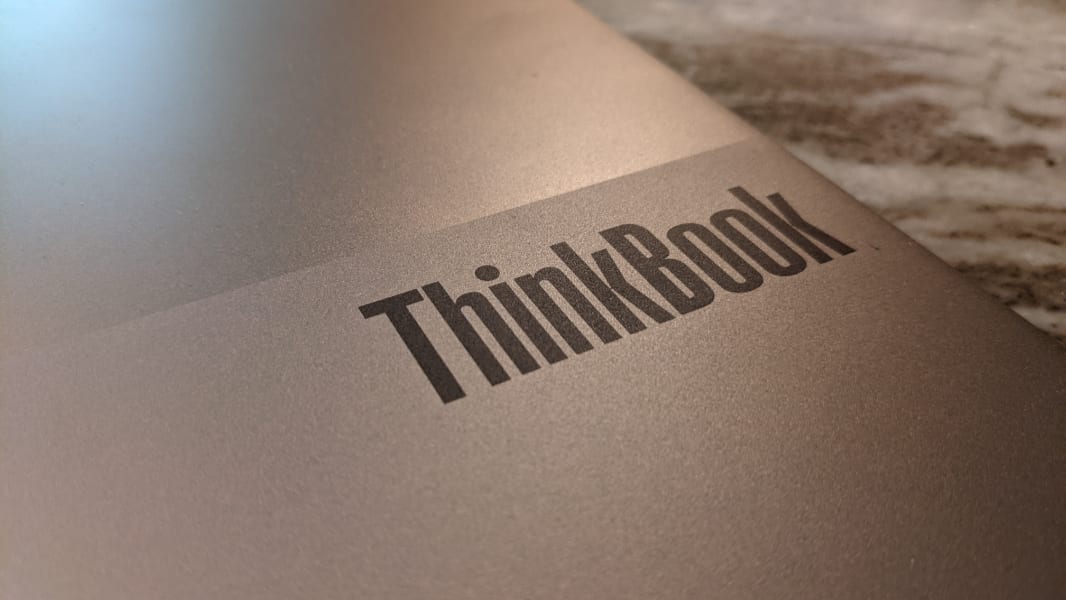
Configured like the review unit—Core i5 processor, 8 GB of RAM, and 512 GB of storage—the ThinkBook 15 Gen 2 would set you back about $831 today. That’s an excellent price for this PC.
That said, it’s worth pointing out that ThinkBooks only receive one year of support. That’s what we typically see with consumer-class PCs, not business-class PCs. You can at least opt to extend the warranty to 2 to 5 years, or choose an onsite and premier support option for 1-5 years.
Recommendations and conclusions
Given its reasonable pricing, there is definitely great value to be had here, assuming, of course, you can put up with the display and keyboard issues I described. But I cannot. I can’t recall the last time I noticed jaggy text and graphics on a PC display, and as a fast but sloppy typist, I find the ThinkBook 15’s keyboard to be frustrating.
But different people have different needs. Some will prefer the addition of the numeric keypad, for example, and some simply want a larger display. And the ThinkBook certainly lands squarely between Lenovo’s consumer- and business-focused offerings. I like the positioning.
If you can live with the ThinkBook 15’s shortcomings, I recommend at least upgrading the battery and the RAM. And if this PC is too bulky, there are 14-inch versions to consider as well.
At-a-glance
Pros
- Affordable
- Handsome styling
- Excellent expansion capabilities
- Some unique software solutions
Cons
- Low-resolution display for the size
- 16:9 display
- Keyboard problems